Inside the Studio With Michael Callas, an LA Painter Whose Neo-Pop Canvases Go Nuclear
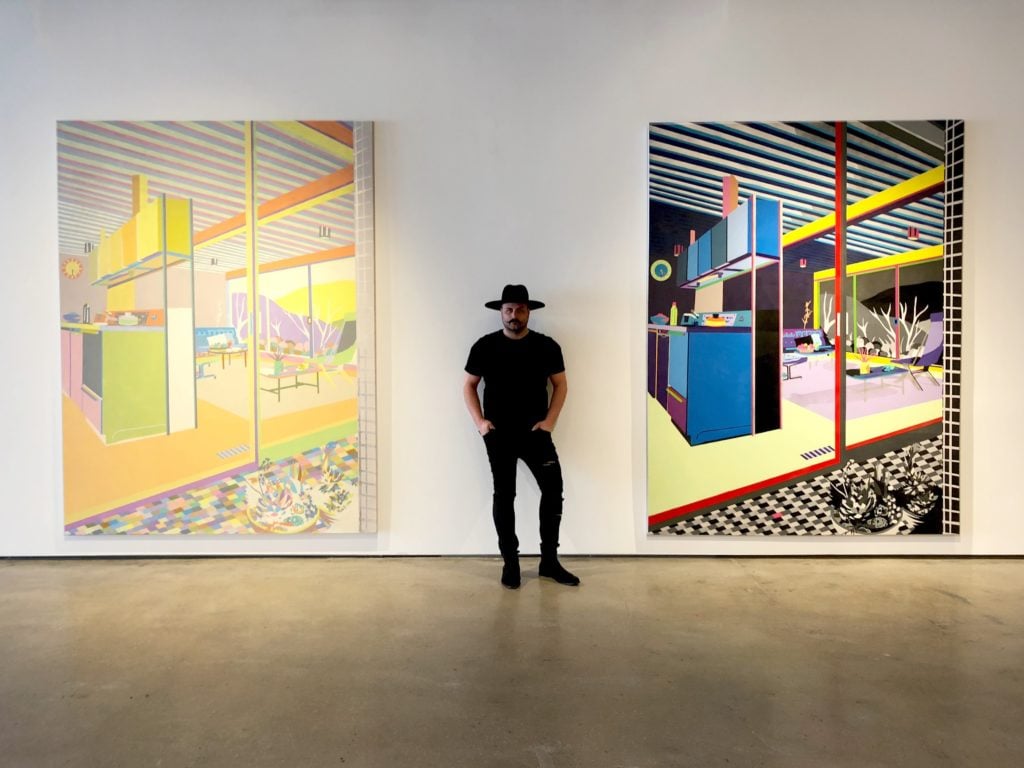

Artnet Gallery Network

Michael Callas’s paintings look like familiar images from the visual lexicon—only viewed through the eyes of someone on an acid trip. Rooted in Pop art, street art, graphic design, and drafting, his paintings are done entirely with spray paint and stencils.
His new exhibition at Detour Gallery in Red Bank, New Jersey, titled “Case Study (Southern Modern),” features a group of paintings made over the last five years. Many of the works, grouped in sets, share the same imagery but are rendered in wildly different color pallets. At first, the gesture seems like a play on the commodification and mass-production of art, or maybe just an excuse to use the same stencil more than once. But the meaning is subtler—and darker—than that.
In a group of three eight-foot-tall works from 2013, for instance, a posh SoCal living room is rendered in neons in one version, pastels in another, and dark blues and blacks in a third. The subject matter remains the same in each, with one exception: the time on a small clock in the corner changes slightly in each version. Why? Because Callas created the paintings to show the scene before, during, and after the time of the first test of a nuclear bomb in the New Mexico desert at 5:29 a.m. on July 16, 1945, separated by a few seconds.
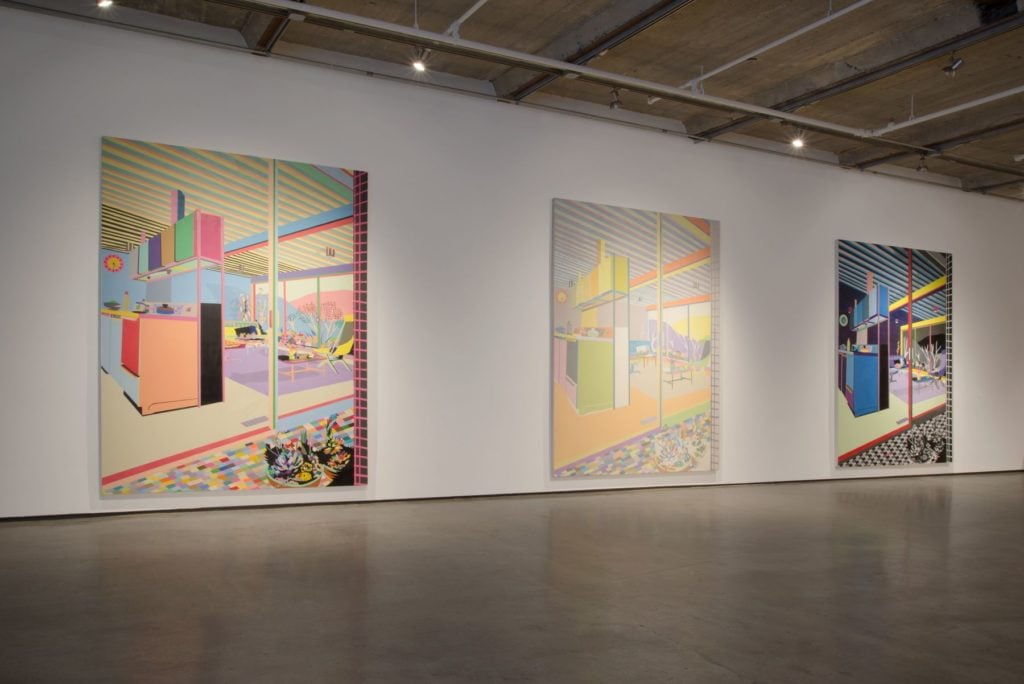
Installation view of “Case Study Paintings (Southern Style California),” at Detour Gallery. Courtesy of Detour Gallery.
“With those particular architectural pieces, I was really trying to challenge myself from a pallet standpoint,” says Callas. “I wanted to convey stories through color.”
Indeed, an investigation of chromatic nuances is a theme that courses throughout his practice, and not only in the works themselves—it’s also apparent in his studio as well. To illustrate this, Callas took artnet News on a behind-the-scenes tour of his home and studio space in LA.
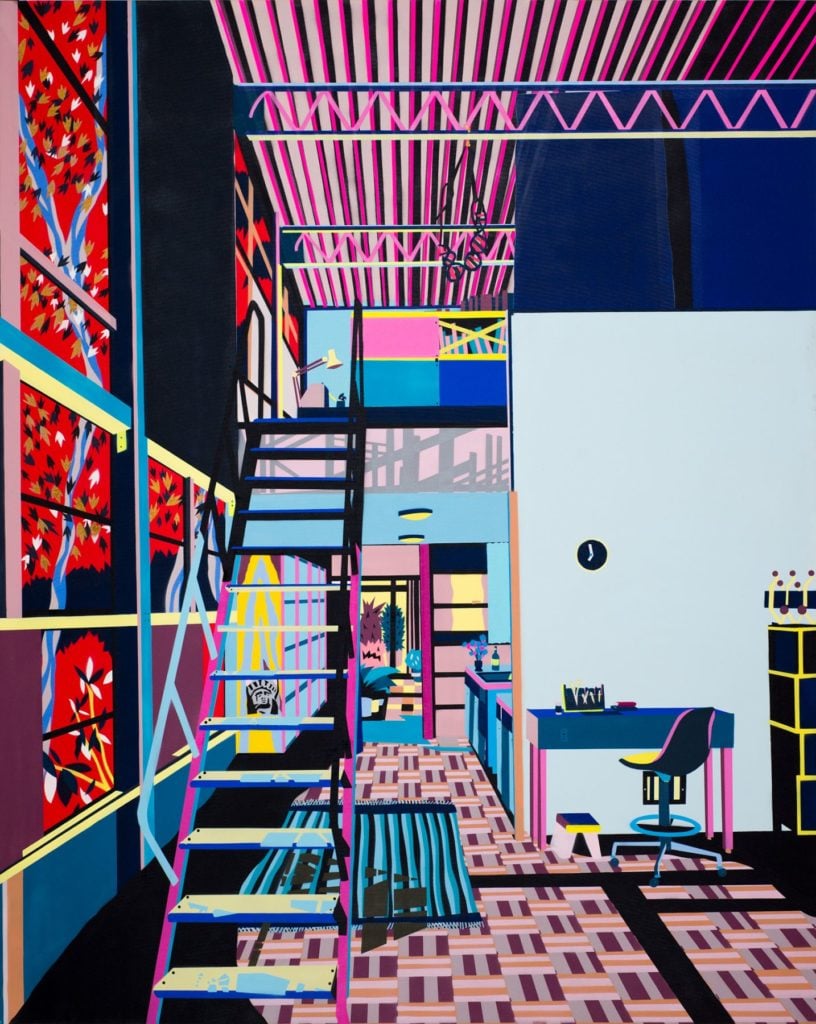
Michael Callas, (2013). Courtesy of Detour Gallery.
Callas’s live-work space is the stuff of young artists’ dreams. He lives in a warehouse-turned-workspace in the arts district of downtown LA, replete with high ceilings, sliding barn doors, and a back yard with a pond and a garden. He made the majority of his furniture himself, and built a lofted second floor above his studio, where he sleeps. He also constructs his canvas stretchers from scratch, and custom-makes his own stencils.
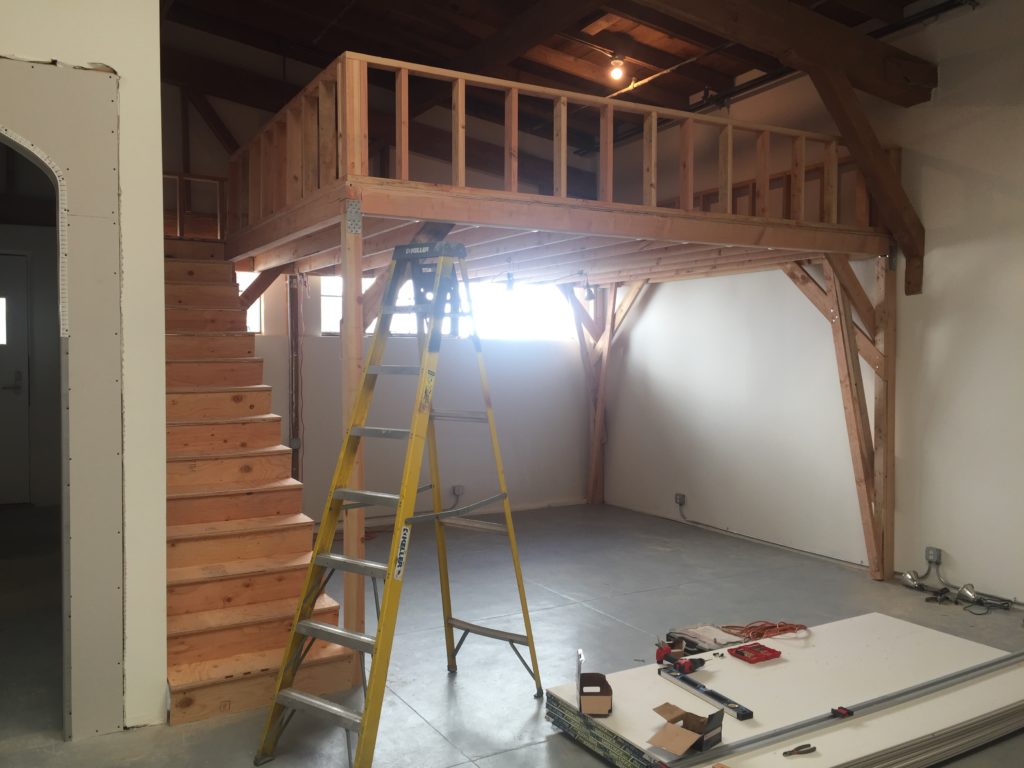
The lofted floor in Callas’s home, which he built himself.
The real highlight, though, is his collection of spray paints, which easily tops a thousand cans in total. Lined up to cover an entire 30-foot-long studio wall, his floor-to-ceiling collection is as meticulously arranged as his paintings. Cans are labeled and organized by color tone and type. They look like they belong more in a library than an artist’s studio.
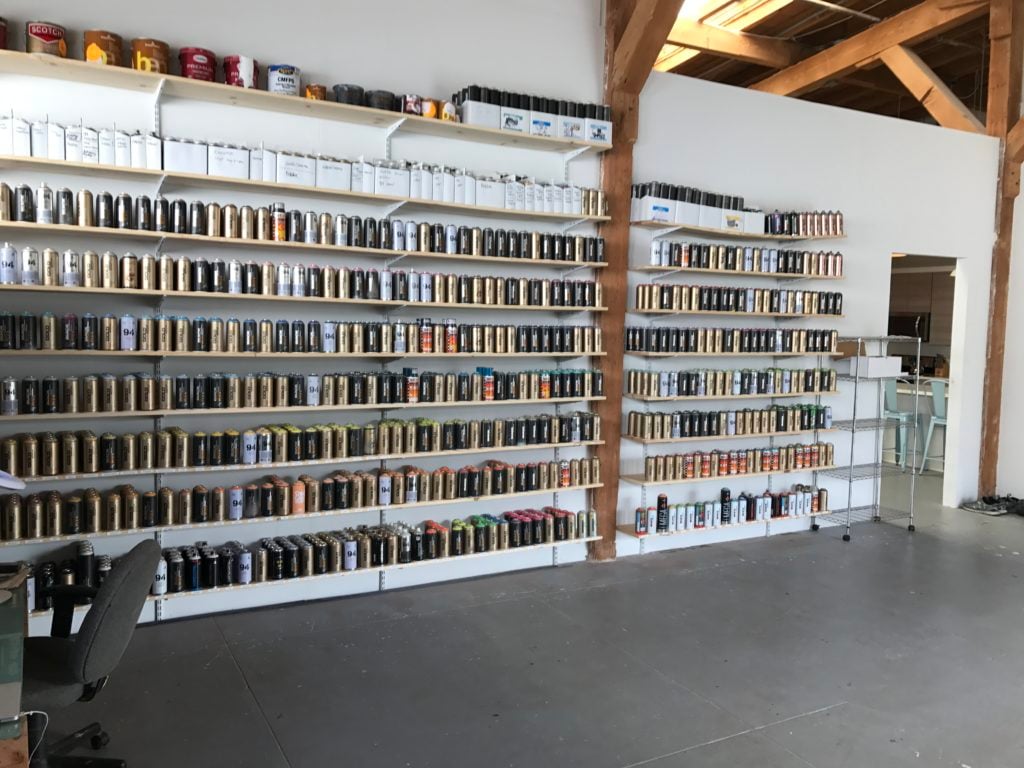
Interior view of Callas’s studio. Courtesy of the artist.
Callas, the son of an airline pilot, moved around for the first years of his life, but spent the majority of his youth in Southern California, in the Orange County area.
He studied architecture before dropping out of school to pursue art full time. “It wasn’t the right fit for me,” Callas explains. “I had an architecture professor during my time there and he asked everyone in the class one day, ‘Who thinks they’re going to be the next Frank Lloyd Wright?’ Of course everyone raised their hand. ‘Well I’ve got news for you,’ he said. ‘None of you are going to be the next Frank Lloyd Wright. You’re going to spend eight years of your life going through school, and then once you’re done with school, another four years as an apprentice. You’re not going to make money, you’re going to be in debt. And then, after all that, you’re going to be a draftsman rubber-stamping documents.’ And I remember thinking to myself then, ‘Wow, how depressing is that?’”
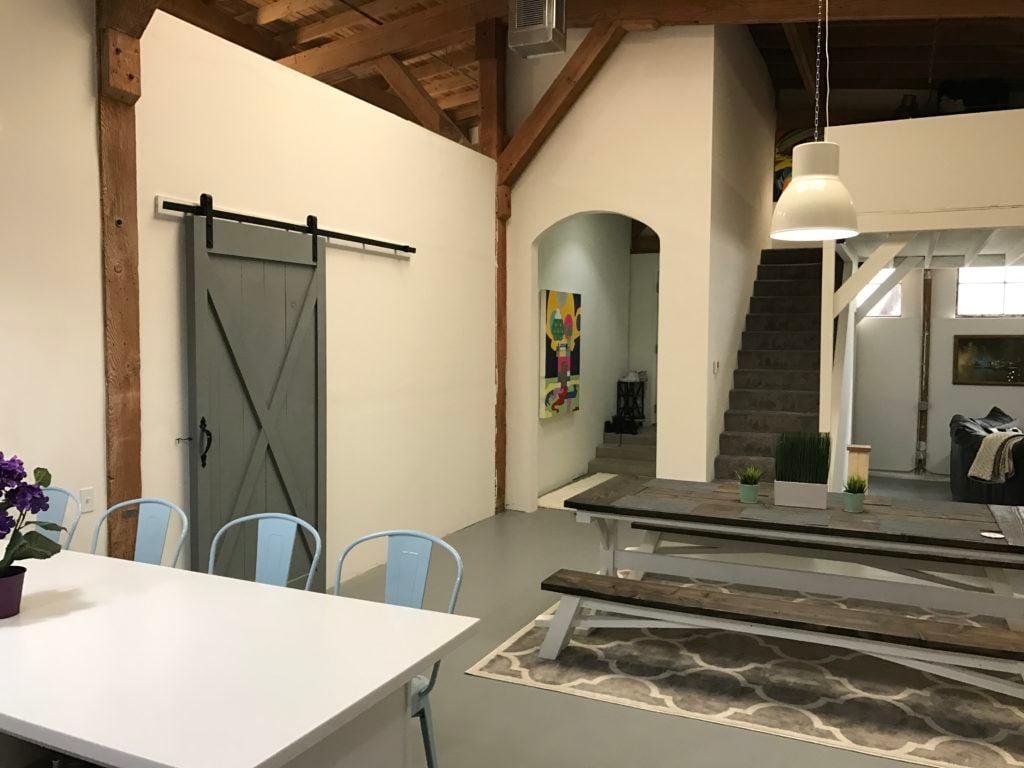
Interior view of Callas’s studio. Courtesy of the artist.
However, the spirit of architectural drafting still informs his work a great deal. His paintings, which begin as sketches, tend to be rectilinear in nature, and his subject matter is often dedicated elaborate building interiors with a keen attention to detail.
“At the end of the day, I realized that the reason I loved studying architecture is because I loved drafting,” says Callas.
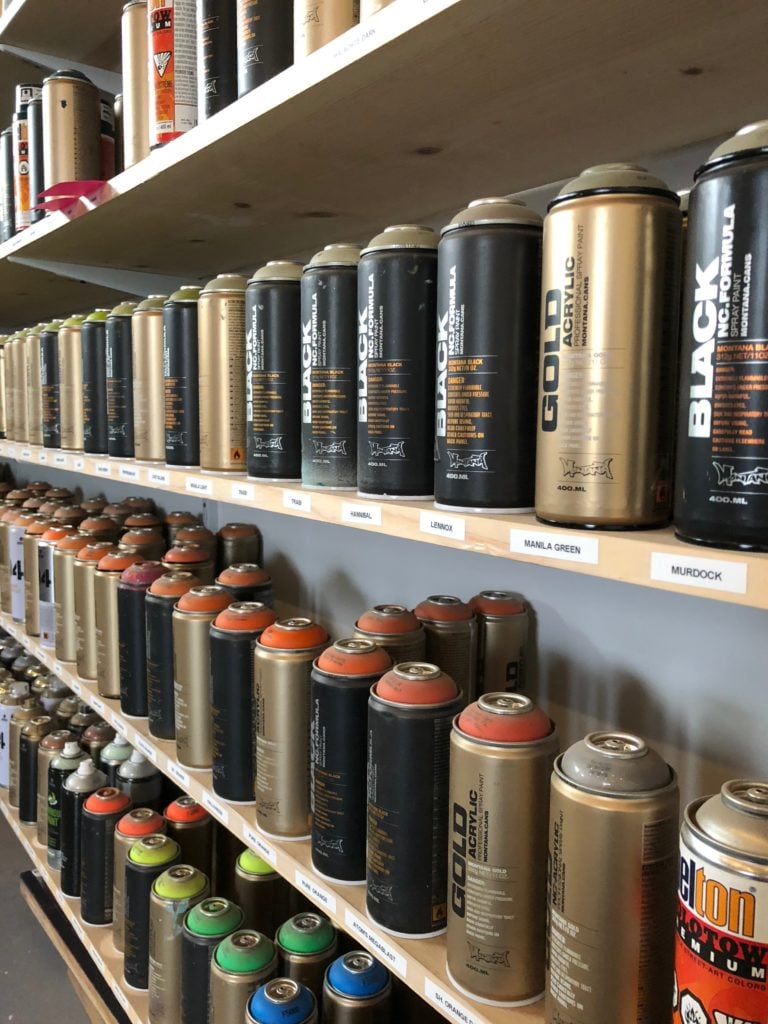
Callas’s library of spray paints. Courtesy of the artist.
“When I first started painting, I had a mentor who is a very big commercial artist,” says Callas. “He told me early on to find something that’s uniquely you, that has your fingerprint, and stick with it—almost like a brand. And for a long time I was in pursuit of that. When I stumbled upon spray paint and stencil about eight years ago, it clicked—it allows me to draw something out then translate it onto a canvas. So I’ve become very dogmatic about process.”
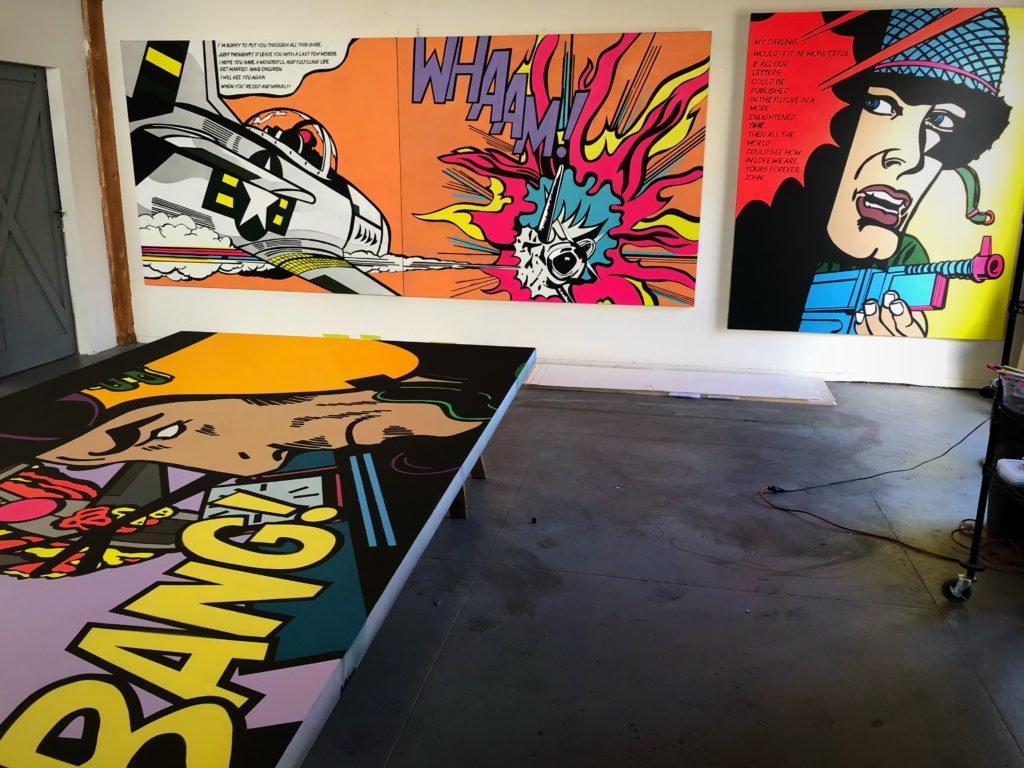
Paintings from Callas’s new body of works, which borrow imagery from Roy Lichtenstein. Courtesy of the artist.
Callas’s new body of work, “The Universe is in the Individual,” is based on appropriated war imagery from a series of works famed Pop artist Roy Lichtenstein, who himself appropriated subject matter from the 1960s DC Comic series, “Star Spangled War Stories.”
See more photos from the artist’s studio below:
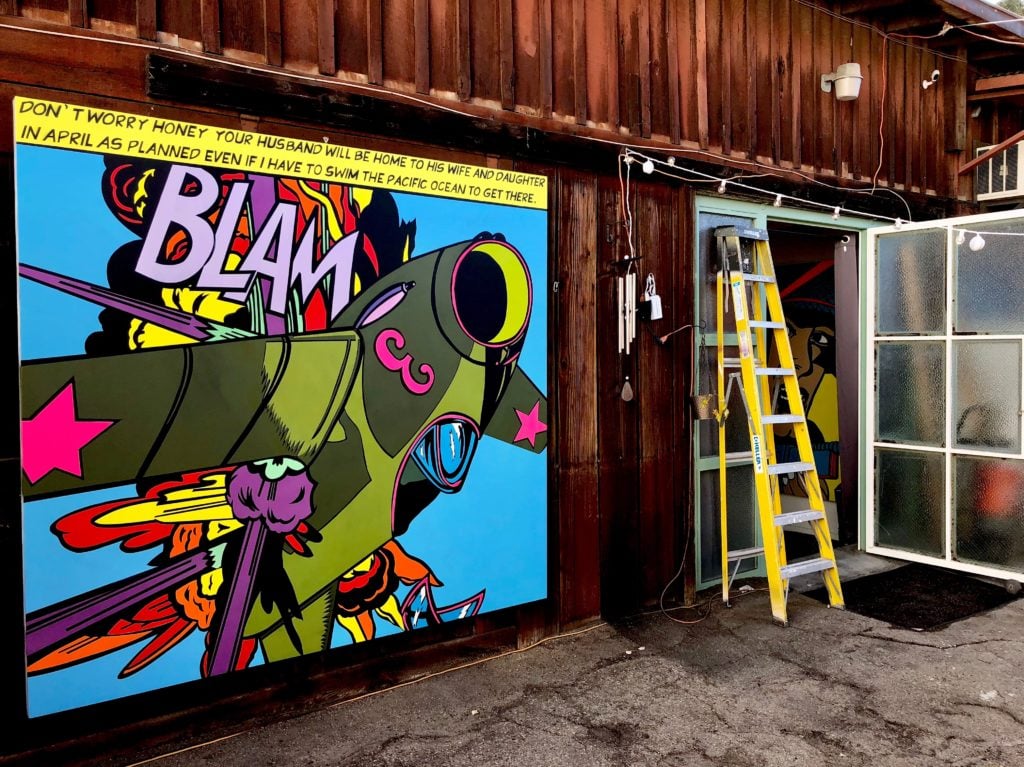
Callas’s backyard, with a new painting in progress.
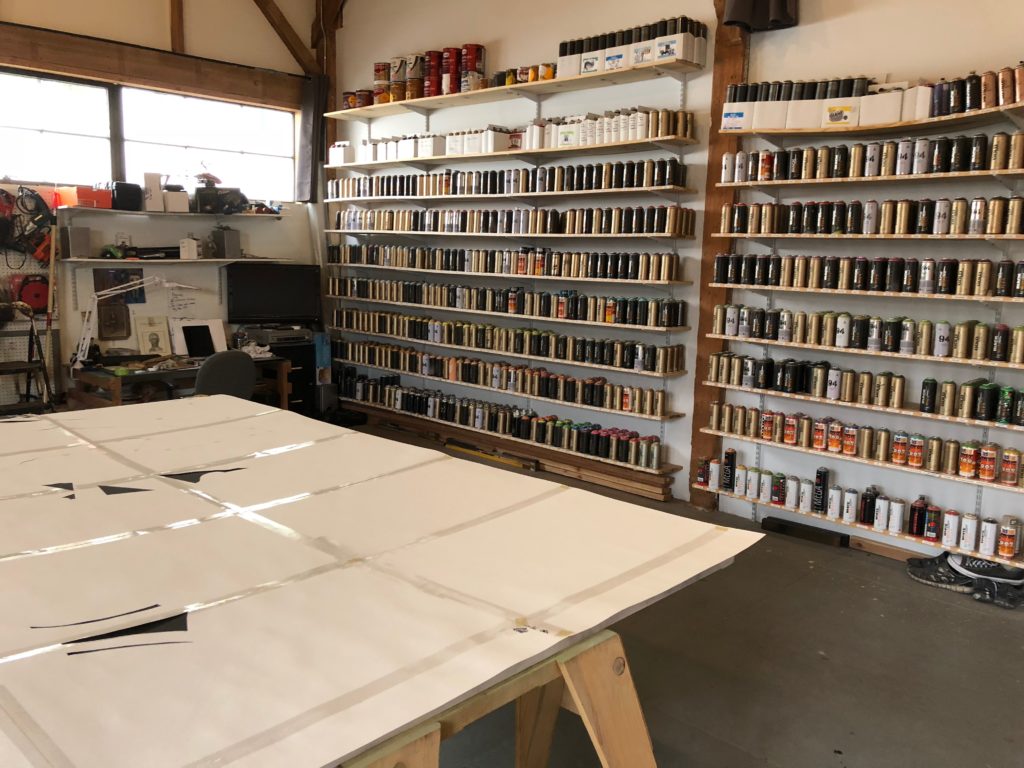
Interior view of Callas’s studio. Courtesy of the artist.
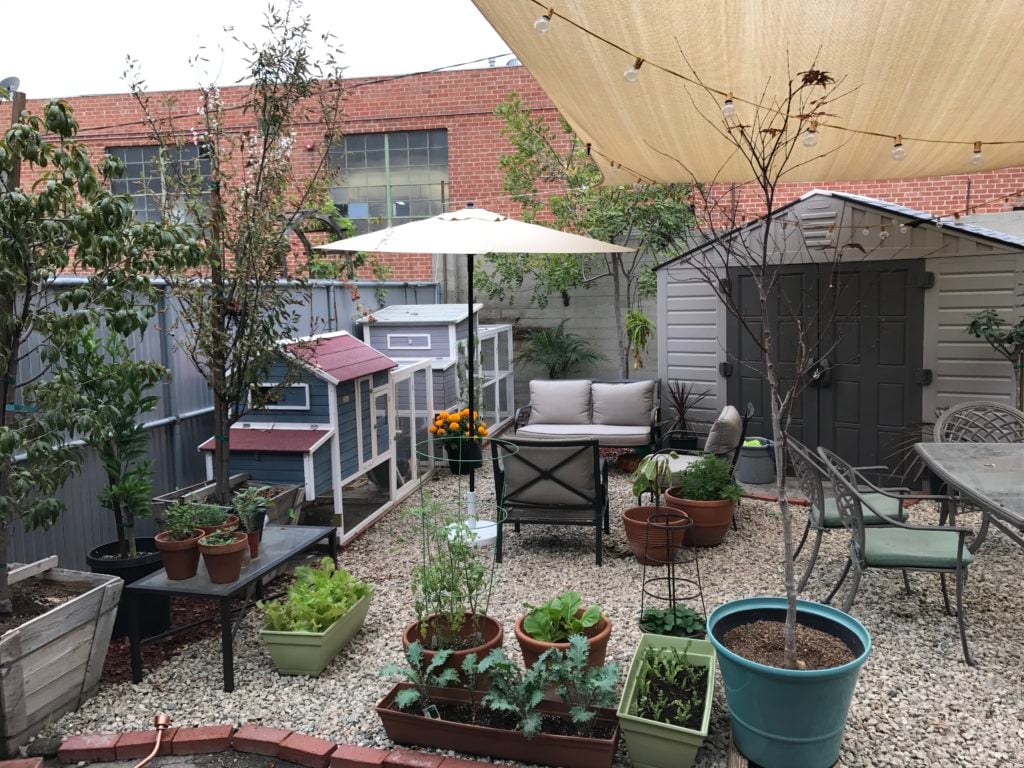
The garden behind Callas’s home studio. Courtesy of the artist.
“Case Study (Southern California Modern),” is on view at Detour Gallery through February 8, 2018.